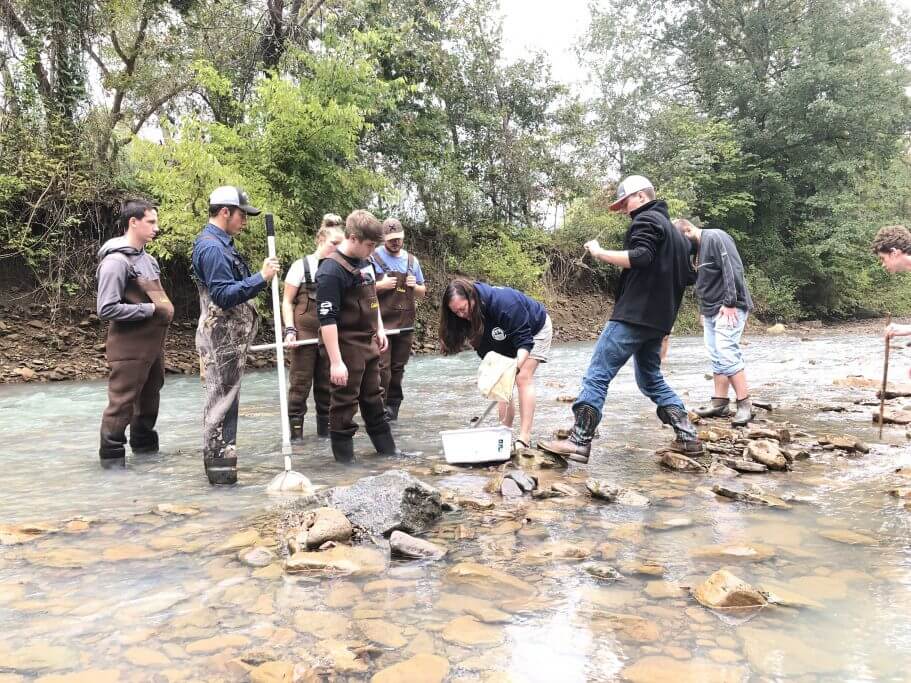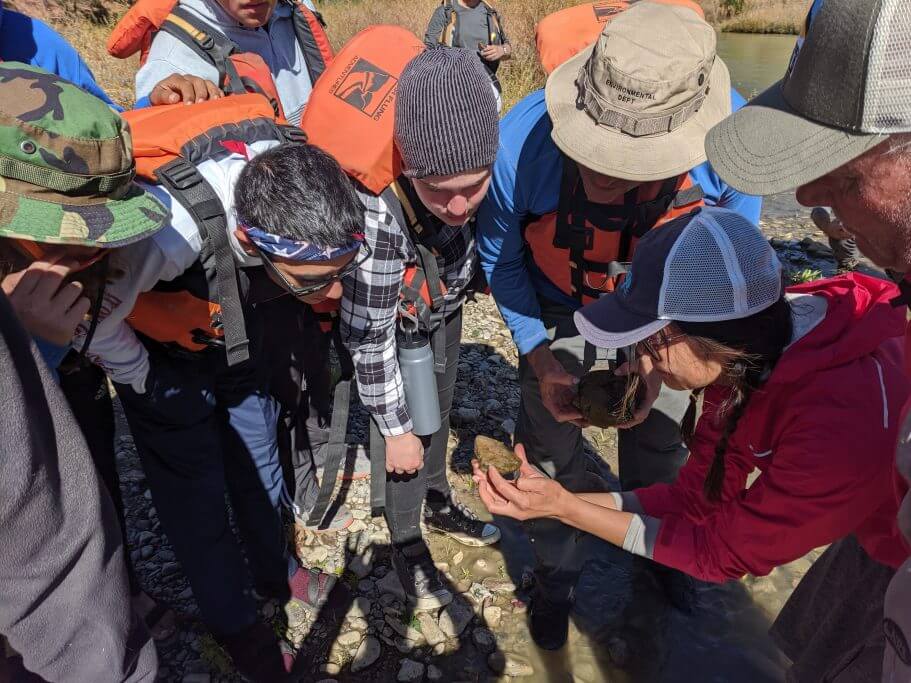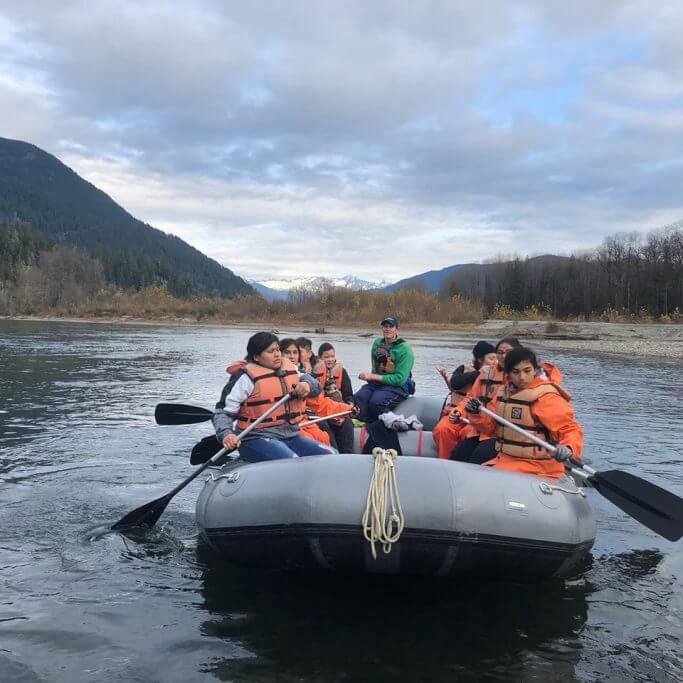USFS and River Network Launch Inaugural Wild & Scenic Rivers Stewardship Partnership Program
This post originally appeared in the winter 2019 issue of River Management Society’s RMS Journal.
“These programs are building resilience and critical thinking skills and confidence for kids in the community,” says Oak Rankin, Executive Director of the Glacier Peak Institute (GPI) in Darrington, Washington, referring to their outdoor and environmental education programming on the Sauk and Skagit Rivers. GPI organizes raft trips and STEM-based education for local, rural students, all of whom have never before been out on the river. On the other side of the country, the Chattooga Conservancy is organizing invasive species removal projects for volunteers from the local area, as well as the Atlanta suburbs. “People loved getting involved and seeing something really happen,” says Emily Anderson, Program Associate with the Conservancy.
These are two of the seven projects that were funded in the first ever Wild and Scenic Rivers Stewardship Partnership Funding, a joint effort between the US Forest Service (USFS) and River Network. Local community and water groups around the country are seeking to further protect and enhance their local Wild and Scenic Rivers, and engage a broader constituency in doing so. River and riparian stewardship is vital to many organizations and these efforts – e.g. water quality monitoring, river cleanups, in-channel habitat restoration, trail maintenance, invasive species management – are often an effective way to garner interest from the public and engage with management agencies and local communities to better protect these rivers.
To foster this shared stewardship approach between local groups and the federal management agency, and ensure that values of designated rivers are both protected and enhanced, USFS funded this new effort modeled after the successful Wilderness Stewardship Performance Program partnership with National Wilderness Stewardship Alliance. As USFS Wild and Scenic Rivers National Program Manager Steve Chesterton says, “these types of shared stewardship projects between local groups and national forests are critical to fostering relationships that ensure the continued protection and enhancement of wild and scenic rivers.”
Goals for project selection included: what will be accomplished and how this furthers the values of Wild and Scenic Rivers; the number of people engaged, with an emphasis on reaching communities new to Wild and Scenic Rivers; how the project provides benefits to both rivers and people; and support from the District Ranger or Forest Supervisor. A match from the applicant was also required. Based on this, the inaugural projects are as follows, and already, benefits are becoming clear in several of our priority areas for this funding:
- Chattooga Conservancy – is increasing public awareness and involvement to address threats to the Chattooga River in Georgia and South Carolina through water quality monitoring, educational outreach, and managing invasive species.
- Glacier Peak Institute – is introducing and connecting kids from rural and mostly low-income backgrounds in Darrington, Washington, to the Sauk and Skagit Rivers though STEM education and time on the river.
- Illinois Valley Watershed Council – is expanding their community engagement program through restoration and education events with a focus on resource-limited, low-income community members to increase stewardship of Oregon’s Illinois River.
- Kern River Conservancy – in California is creating and implementing an education awareness platform for responsible public land use and native trout preservation on the Kern River.
- Native Expeditions – is working to develop youth watershed leaders to steward Arkansas’s Mulberry River through community water science and leave no trace awareness.
- New Mexico Wild – is undertaking invasive species monitoring along the Rio Chama while also engaging local, diverse youth in Wild and Scenic River ecosystem education and conservation.
- Snake River Fund – is using funds to improve the visitor experience along a highly used path to the Snake River in Wyoming through trail restoration and educational signage.

Surveying for macroinvertebrates on the Mulberry River. Photo courtesy Native Expeditions.
Engaging Youth
New Mexico Wild’s Wilderness Rangers took a group of nine students from a local STEM high school out on the Rio Chama as part of a multiday trip to map invasive species. In partnership with USFS, Bosque Ecosystem Monitoring Program (BEMP), and Rio Grande Restoration, the students learned about monitoring, river history, and ecology, and the plant survey will be used for future management and removal efforts. In Arkansas, Native Expeditions focuses on kids in rural areas through water quality monitoring, stewardship, and watershed leadership. Director Robin Gregory is committed to serving students and teachers and says, “I make it fun, and show them a tiny world in rivers that they never knew existed and how to access a stream’s water quality for the rest of their lives by finding the biodiversity that exists through macroinvertebrates.” Some of her students’ favorite parts of school is being part of the ‘Stream Team.’

Students learning on the banks of the Rio Chama. Photo courtesy New Mexico Wild.
Reaching New Audiences & Hands-On Stewardship
Glacier Peak Institute partnered with a low-income Latino neighborhood, Kulshan Creek, to provide rafting opportunities for students. For many of them it was their first boating trip, and over the course of the day they went from being scared to jumping in the water. California’s Kern River Conservancy has similarly expanded their constituency for the river into the Bakersfield area, and works with Latino volunteers who lead outreach and engagement for the organization. Groups are also finding new partnership opportunities and support from local businesses and water utilities with similar interests in improving clean water and enhancing local economies.

Rafting the Sauk River. Photo courtesy Glacier Peak Institute.
“It’s really exciting to see these projects unfold,” says Katherine Baer, Director of Science and Policy at River Network. “From trash removal, trail building, community watershed science, and invasive species removal, to engaging youth and inspiring future employment pathways, we’re thrilled to be offering this funding opportunity in collaboration with USFS and hope we can sustain and grow it in future years.”
Click here to read USFS’s executive summary with further details on this work.





